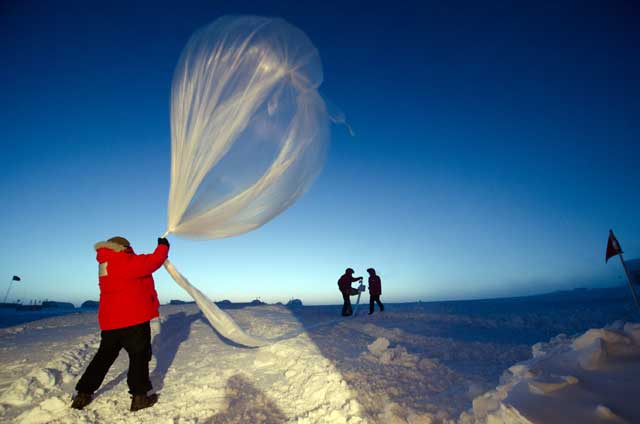|
Shrinking backLatest measurements by NOAA at South Pole show smaller ozone holePosted October 25, 2013
The ozone hole that forms each year above the Antarctic was a little smaller in 2013 than in years past, according to a recent news report from the National Oceanic and Atmospheric Administration (NOAA) NOAA and the Cooperative Institute for Research in Environmental Sciences (CIRES) In addition, those measurements showed ozone levels in a critical region of the atmosphere did not drop as low as in years past. The Antarctic ozone hole began making a yearly appearance in the early 1980s, caused by chlorine released from man-made chemicals called chlorofluorocarbons (CFCs). Under the 1987 Montreal Protocol For more about the 2013 ozone hole, see the NOAA press release The Atmospheric Research Observatory at the South Pole Station is a National Science Foundation |



For USAP Participants |
For The Public |
For Researchers and EducatorsContact UsU.S. National Science FoundationOffice of Polar Programs Geosciences Directorate 2415 Eisenhower Avenue, Suite W7100 Alexandria, VA 22314 Sign up for the NSF Office of Polar Programs newsletter and events. Feedback Form |


